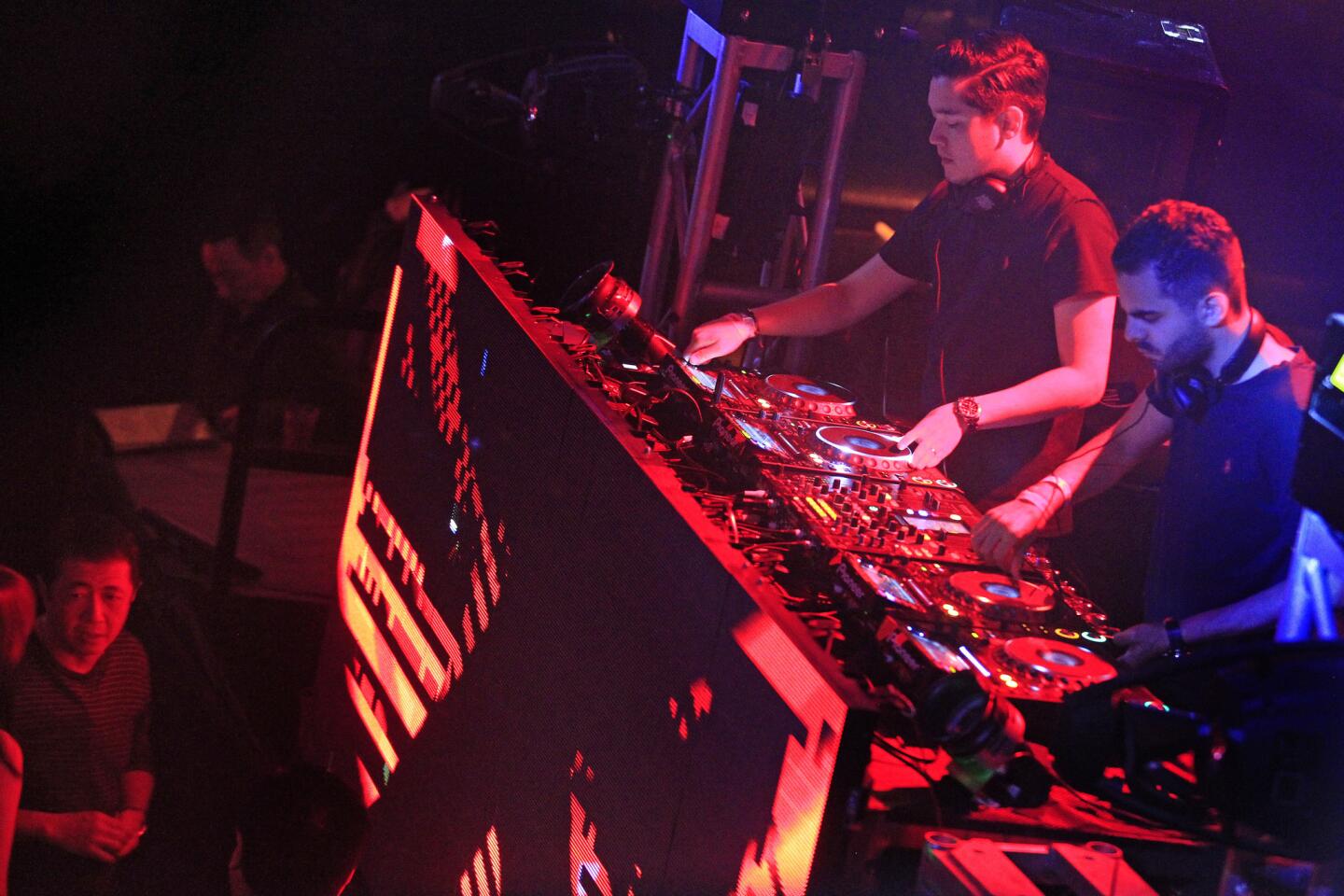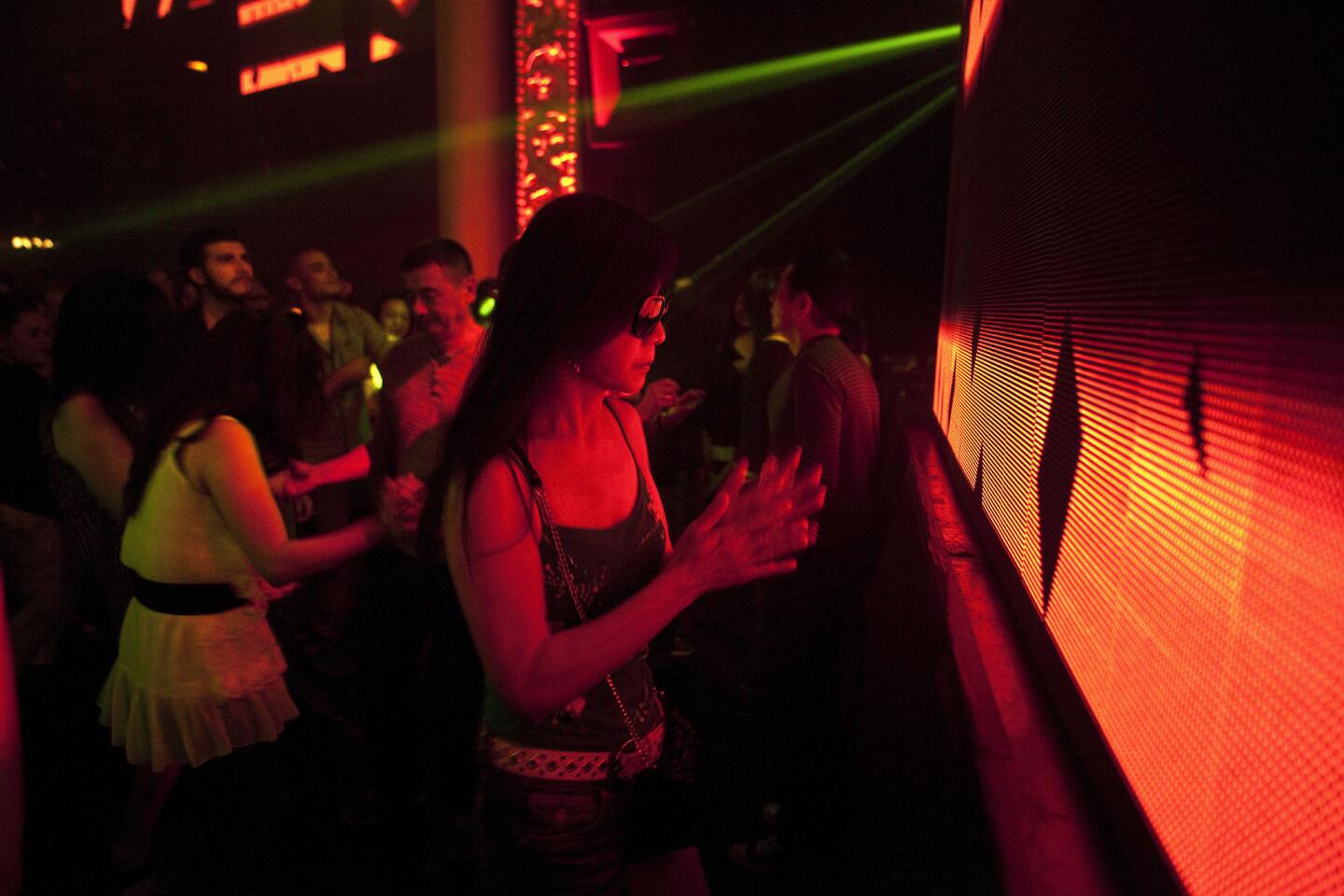John Lyons readies Avalon Hollywood for whatever’s next in dance music
- Share via
In his third-floor office above the newly renovated Avalon Hollywood nightclub, John Lyons pulled out a black-and-white photo of himself with the ‘70s disco legend Evelyn “Champagne” King. He guessed he was about 21 at the time, and just getting his footing in clubland.
“As you can see, I’ve been in the dance music business for a long, long time,” he said. “You’re probably too young to have been there for disco, but I can tell you: When a scene starts to become a caricature of itself, people have no choice but to discard it.”
That’s a grim warning from a guy whose nightclub has been at the center of the EDM boom in Los Angeles for over a decade.
Since opening in 2003, Avalon has hosted practically every major name and rising act in contemporary dance music passing through the Southland. Its Friday night Control series hosts contemporary EDM, trap and dubstep superstars; Saturday nights bring classic and underground house and techno, with artists making full use of the club’s rare 24-hour operating license (though alcohol sales end at 2 a.m.).
Now that America is several years into EDM’s ascent, festivals and club owners are wondering how much of the money and attention on the scene is a permanent sea change — or a velvet coffin for a sound that’s bound for a backlash.
After a fairly thorough rehab that debuted last weekend, Avalon looks better positioned than most to carve a post-EDM future for dance music in L.A.
Eleven years isn’t just a long run in night life — it practically spans two distinct eras in American dance music. Moby’s pop-crossover “Play” was just off its licensing blitz when Lyons bought the place in 2002. An awful lot happened in music in the interim, but Avalon’s bullish consistency left it well-prepared for the return of house and techno to pop culture in the late 2000s.
The venue always had a charm of its own. Unlike the eight-figure new megaclubs of Las Vegas, Avalon kept the old-Hollywood details of its original 1920s architecture (like the massive crown-shaped ceiling detail). But even Lyons acknowledged that it was high time for some 2014 infrastructure.
“The bathrooms still had plumbing from 1927,” he said. The renovation isn’t a wholly drastic makeover, but “for a Saturday night club goer, there’s a lot to notice.”
Updates include a whole new entry and foyer designed for hanging out (and not just shuttling masses of sweaty fans in) and a cozier balcony with new VIP booths. Along the walls, 150 new LED panels can accent a DJ set or let artists wrap their own visual content around the room. Most important, the venue has an entirely new sound system hand-designed by Lyons (he’s also worked on the systems of major clubs like Light in Las Vegas) that can keep pace with another decade of trends in electronica.
The renovation opened to the public May 7 with the spoken-word series “The Moth,” capped by a six-hour set on May 10 from the house-music stalwart Erick Morillo, who has performed countless times at Avalon over the years.
“The new lights had this peripheral look from inside the DJ booth; it looked like they were spinning the whole club around you,” Morillo said. “The new sound system was unreal. You could stand on the floor and feel the bass and still have a conversation — it was loud, but it was perfect. Whatever they put in there, I have to get one for my house.”
But a room is only as relevant as the music coming through it. That, more than refurbishing the restrooms, will be the fundamental challenge for Avalon as it navigates whatever is coming next in dance music.
Legendary rooms like the Larry Levan-era Paradise Garage in New York and Frankie Knuckles’ Warehouse in Chicago earned their legacies from defining a sound or moment in a city’s culture. Avalon’s bookings are too heterodox for that, and the long-term artistic (rather than commercial) legacy of EDM is still uncertain.
A decade-plus in, the venue has become something else, and rare — a consistent proving ground for new dance talent.
The venue’s longtime promoter, Dave Dean of Giant, takes the career of hometown hero Skrillex as a model for talent-buying. He wants to find diverse rising acts, help vault them to the next level beyond Avalon’s 2,000-capacity floor, and not try to compete with festival and Vegas paychecks after DJs go on to bigger things.
“This rising tide lifts all boats,” he said. “We’re all about giving DJs their first big opportunities. Look, this is a city of 8 million people and a region of 20 million, and people here are more invested in dance music than any other region of the country. They want this experience, and this place has an unparalleled history with almost every major artist playing here.”
If you do your job right, he said, you hit a sweet spot where new artists forge careers there, and major acts return for underplays based on their relationship with the space.
That’s fundamentally the selling point of Avalon. In a culture where clubs last a few years at best, Avalon is one of the few rooms that last long enough for an artist to get attached. “It’s so important to have places like this, to always have a home at clubs like Space or Pacha or Avalon,” Morillo said.
The trick is to make sure you’re still around when something new happens.
“As EDM becomes more of a business, a lot of that magic is going to get diluted,” Lyons said. “But there’s always new magic.”
More to Read
The biggest entertainment stories
Get our big stories about Hollywood, film, television, music, arts, culture and more right in your inbox as soon as they publish.
You may occasionally receive promotional content from the Los Angeles Times.

















